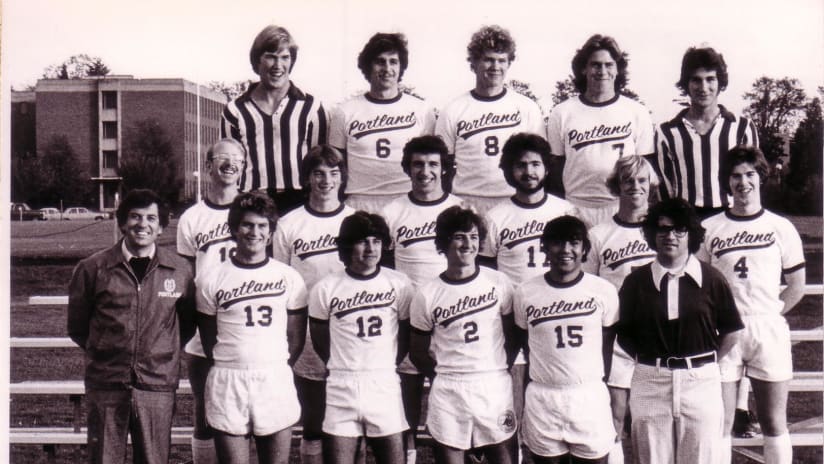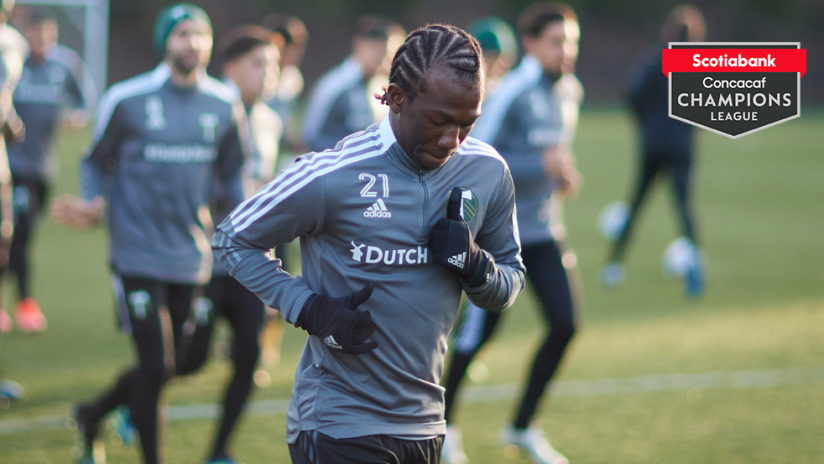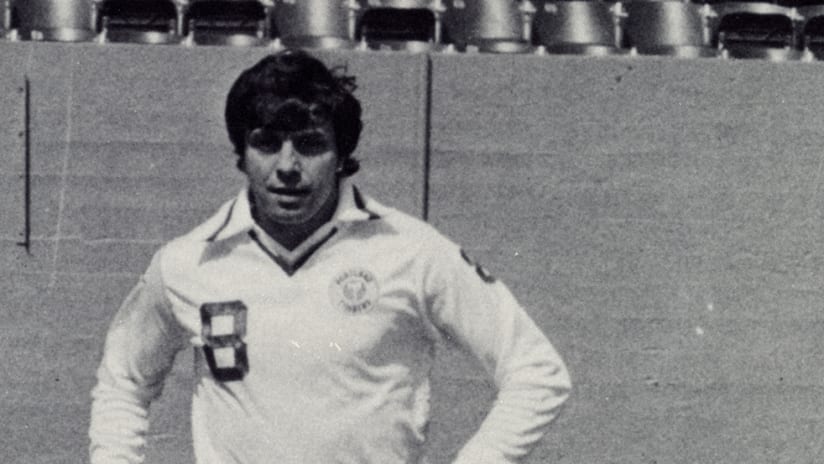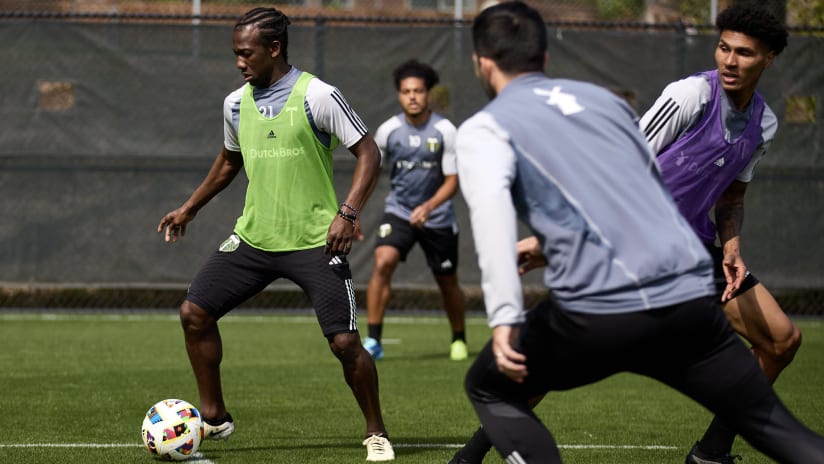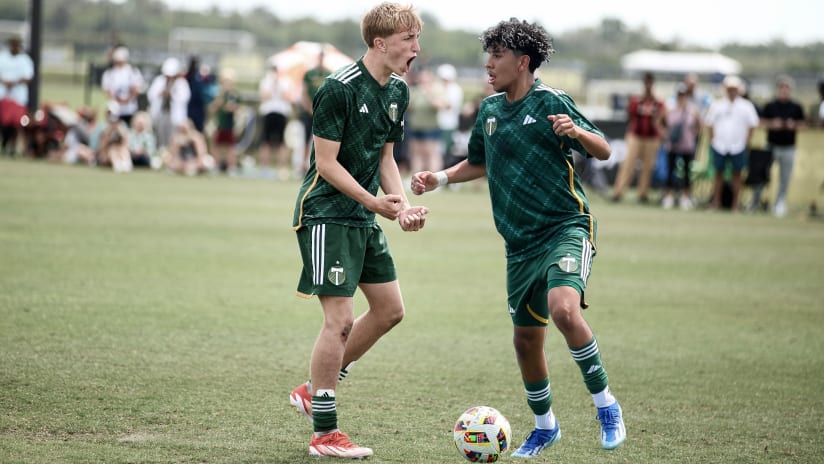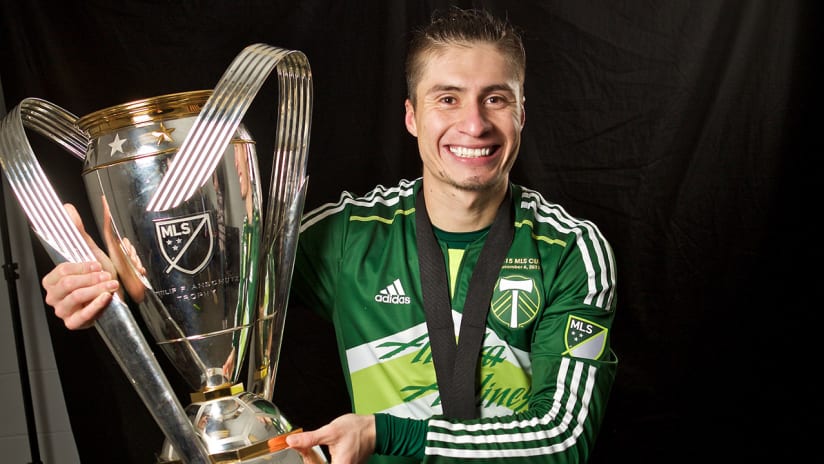With three games into the Timbers inaugural MLS campaign—four if you include the club’s victory over Chivas USA in the U.S. Open Cup play-in game—a pattern is beginning to emerge in head coach John Spencer’s style and tactics: relentless attack and unending energy.
The goal differential may not show it, nor the results quite yet, but with soccer being soccer, the better team on the field does not always get the win. The Timbers have 33 shots on goal in their first three league games and, with the exception of the season opening loss against the Colorado Rapids, have controlled possession.
On paper, the team is doing the right things. But the question remains, with all this attack, where are the goals? It comes down to one key ingredient: chemistry. There are numerous holdovers from the USSF D-2 edition mixed with lots of new signees, Expansion Draft choices, SuperDraft selections, trades, and foreign signings.
The team is still getting used to playing with each other and figuring out their relatively new teammates. While that occurs, Spencer’s overall strategy that he is striving for is taking shape. While there were discussions early on to look at a 4-3-3 formation, Spencer has chosen to go with a 4-4-2. Formations are often a fluid entity to begin with, sometimes changing from game to game or from minute to minute, but Spencer’s feeling on the current state is clear.
“I think the formation suits us,” he said.
The head coach has had to tinker with his lineup due to early season injuries but by making sure that the depth across the squad reflects his ethos, it means that the parts are designed to be interchangeable.
In last week’s 1-1 draw with the New England Revolution, Spencer’s 4-4-2 played a good counter to head coach Steve Nicol’s own 4-3-3 deployment.
“We were coming through, we were winning the possession and we were getting back at them and then they went to a 4-4-2,” analyzed Spencer.
Combine the possession and constant ball movement with an encouragement for the Timbers fullback wingers to get involved offensively up field, and there is a lot of box-to-box back and forth.
Let’s break down the plan so far to show what’s working and look to what needs to improve.
The Strikers
Though Kenny Cooper and Jorge Perlaza—the two primary strikers the team has relied on so far—have only one goal between them; on the positive, they have had numerous chances. Perlaza is continuously in the mix while still adjusting to a new league and new surroundings and Cooper’s height, pace, and energy have him motoring all over the field.
There’s a feeling and confidence that the two of them will eventually break through with additional goals however, the presence of two forwards—regardless of who they are—remains a definite preference for Spencer in his methodology.
“I think it keeps the [other team’s] back four honest,” he says. “I think that when you play one forward up top, then it’s very easy [for the other team] to push their two fullbacks on and just go the two central defenders to pick up our one guy.”
But that doesn’t mean those front two stay static or flat. Oftentimes, Perlaza can be seen up high to utilize his speed in hopes of breaking past the defensive line. Cooper, in contrast, can be seen floating everywhere from up top in the box to tracking back into the midfield to help create turnovers and generate counterattacks.
“They have the license to go and play and roam,” says Spencer.
“That’s what we got the goal [against New England] from. Kenny picks it up and drives across the field and knocks it into Jeremy Hall and we play and we get the goal from there. I think that you’ve got to give them that license, that freedom to express themselves in the attacking third.”

Having Cooper and Perlaza not playing, as Spencer puts it, “like a robot,” will continue to open up the attack. Getting the ball to them, however, remains a challenge. Key to that delivery is the involvement from the Timbers outside fullbacks.
The Fullbacks
With the acquisition of defender Rodney Wallace in the offseason to man the left side of defense and Steve Purdy staking a claim during preseason for the right position, a clear emphasis was put on speed and attack from the backline. Even rookie Freddie Braun—an attacking midfielder with last season’s Timbers U-23’s team—was experimented with in the backline during preseason.
With those outside fullbacks constantly moving up field, it may appear that they are caught out of position should the opposition mount a counterattack. Not so. The holding midfielder—a role James Marcelin handled with aplomb against New England—is laying back to assist with the two center backs.
It appears open and fluid, and it is. It can also be risky but remains another central element to Spencer’s overall aggressive plan.
“I want my fullbacks attacking,” Spencer says unequivocally.
Having said that, “they can’t attack at the same time,” remarked Spencer. “If the ball’s on the right hand side, Rodney Wallace can’t be attacking [from the left] because he’s got to tuck in. But for me, I want our fullbacks to become wingers. I want to play with four wingers when we have the ball at times and push forward and try to create, try to be exciting. For me, it’s just by design.”
It is a tactic that was used to great effect against New England. While the game did end in a draw, the Revolution were frustrated all evening by the pressing movements that the Timbers presented—including the movement up field on the left from Wallace who posed problems for the Revolution’s right back Kevin Alston.
“I think that if you look at Alston—probably one of the best right backs in the country—he spent most of the game in the defensive third because we were attacking him so much that he couldn’t get forward,” said Spencer. “I think we did a great job of making Alston defend for 85, 90 minutes of the game.”
That constant push forward leads us to the final piece of the attacking puzzle and one that Spencer is most concerned with fine tuning and improving upon.
Service Into The Attacking Third
Despite the great movement both on and off the ball and a number of great scoring chances, there has been a frustrating lack of goals.
The delivery of the ball into the attacking third has been a trial so far. In Spencer’s words, “We need more quality.”
Against New England, of the 13 shots the team took, only two came inside the 18 yard box with the single goal coming near the top of the penalty area. There’s no law that says you have to get inside the box to score—midfielder Jack Jewsbury scored from 35 yards out against Chivas USA—but it certainly doesn’t hurt to get closer in.
The push to improve this key linking into the final third does not lay solely at the feet of the midfield. Jewsbury has been solid so far this season in helping marshal the midfield attack but the delivery is something that, Spencer feels, needs to and can come from anywhere.
“When you’re attacking and we’re asking Steve Purdy to get forward into the final third, he’s got to deliver a quality ball. It doesn’t matter who you are, if you’re Perlaza out there, if it’s Kenny Cooper, when you get the opportunity and you’re under no pressure, you’ve got deliver quality service, because without quality service, you’re not going to score goals,” said Spencer.
While certain elements in Spencer’s attacking architecture are beginning to work the way he envisions, there’s still much to be done with clearances and service needing to improve out of the defensive third and the team has had a tendency to get burned within the first 20 or so minutes of a game. Unforeseen elements include the first-choice goalkeeper, Troy Perkins, having yet to play in 2011 due to a knee injury picked up in training, coveted rookie Darlington Nagbe had surgery and is still adjusting to MLS, and Sal Zizzo has had shoulder issues.
However, Nagbe made his MLS debut against New England, Zizzo—who showed great promise linking with Purdy on the left in preseason—continues to improve, and Perkins has been back on the practice field for training.
Moreover, given the style and strategy put in place, no Spencer-coached team will ever be accused of being out-worked. The energy will remain high, the attacking unyielding, and the goals will come.



